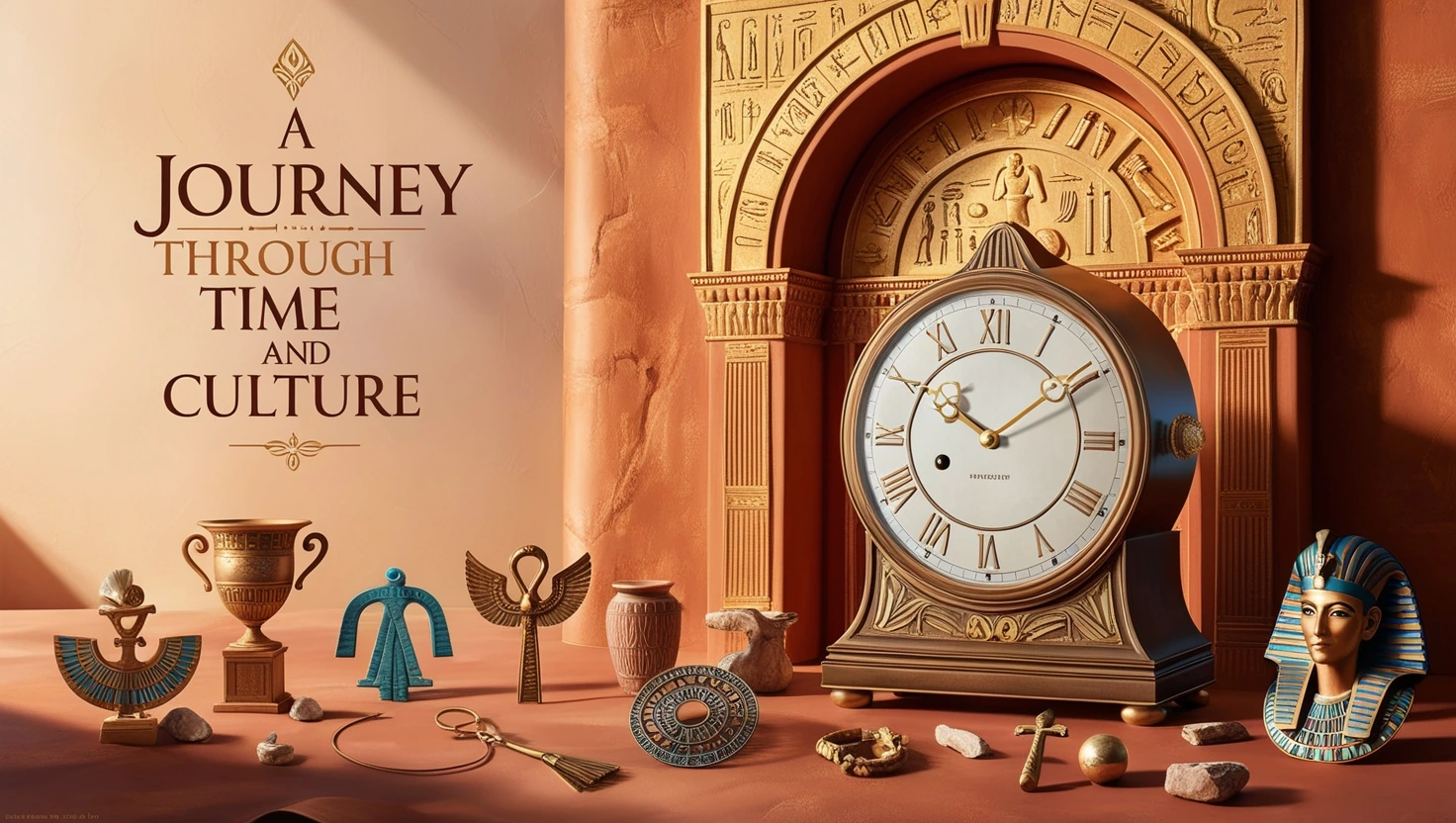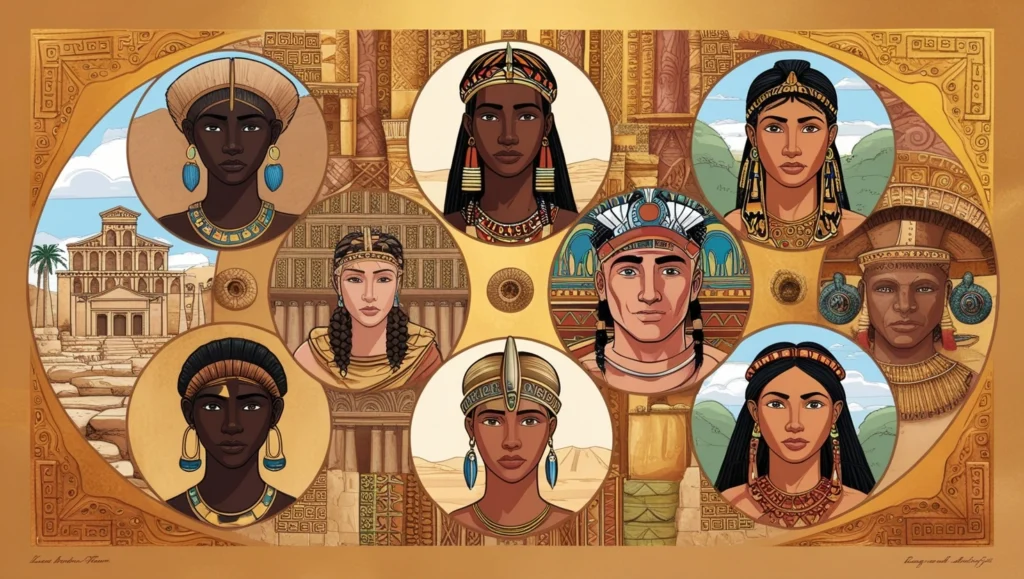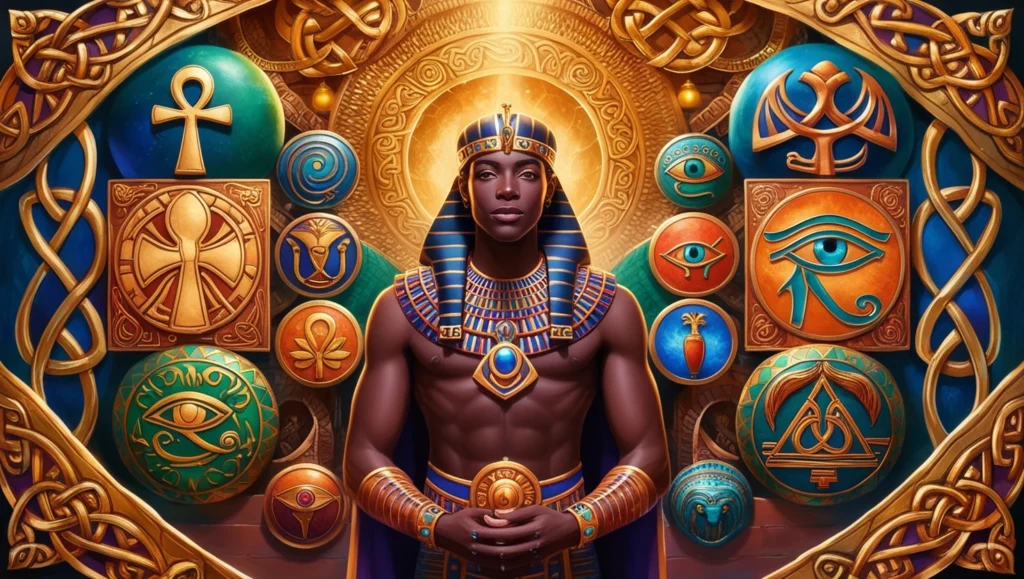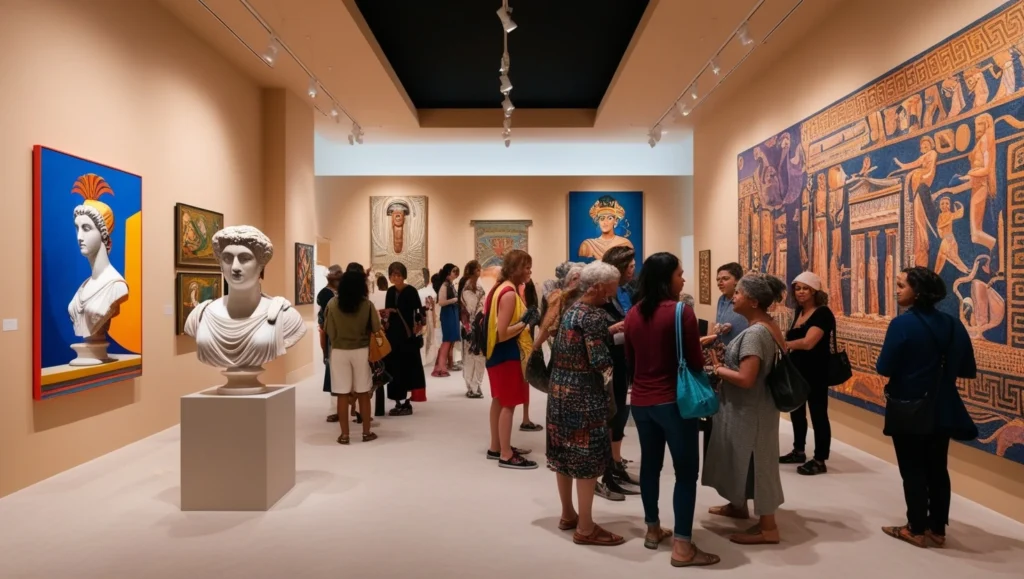
Ancient artz provides an intriguing prism through which we may examine the complex fabric of human history, illuminating the ideas, customs, and aesthetics of long-ago civilizations. Ancient art, from the complex sculptures of the Etruscans to the vivid fabrics of the Ainu people, illustrates the many cultural narratives that have molded cultures all over the world.
This blog explores numerous elements of ancient artz, such as its growth via regional variances and commerce, its importance as a kind of social commentary, and artists’ inventive techniques. We will also look at how new interpretations and preservation attempts continue to link us to this creative legacy. We shall also analyze religion’s effect on ancient art. By revealing these layers, we may understand not only the historical relevance of ancient art but also its long-lasting effect on current creativity and cultural identity.
The Evolution of Ancient Artz
Ancient artz shows humanity’s unique experiences and expressions across time and space. Resources, climate, cultural contacts, and trade routes shaped its evolution. There are thorough explanations on regional variances, trading routes, and how ancient art records history.
Variations by region
Classical art developed differently in different places owing to climate, resources, and culture.
- Climate and Materials: In Europe, cave paintings used natural pigments from local minerals and plants. Charcoal gave deeper hues than ochre, which provided earthy tones. In contrast, Mesoamerican paintings used minerals like azurite for blue and cochineal for red to create brilliant hues, representing the region’s biodiversity and available resources.
- Cultural influences: Cultural influences also shape creative styles. Greek art emphasized idealized human forms and realism, expressing the philosophy of beauty and proportion. In ancient Egypt, art was more symbolic and strictly conformed to order and afterlife traditions.
- Technology and Techniques: Techniques also produced geographical differences. In Minoan Crete, fresco painting created large-scale wall paintings depicting nature and humans. Ancient Mesopotamia’s beautiful metalwork demonstrated superior metallurgical processes that were unique to the region.
Influence of Trade Routes
Trade routes facilitated cultural contacts that developed creative traditions across civilizations.
- Cultural exchange: The Silk Road demonstrated how trade networks can interchange art as well as products. From east to west, merchants introduced skills and styles that impacted local painters. Gandhara (now Pakistan) acquired Hellenistic sculpting forms, mixing Greek art with indigenous elements.
- Trade routes: Trade routes facilitated the creation of hybrid art forms that integrated various civilizations. Along trade routes, Buddhism expanded, incorporating Indian iconography and Chinese aesthetics to create Buddhist images.
- Materials Exchange: Trade channels had an impact on creative output. Silk from China transformed textile arts in Europe, while spices and precious stones inspired ornamental arts worldwide.
Art as a Historical Record
Ancient artz records social changes over time.
- When nomadic lifestyles gave way to sedentary agriculture, art forms evolved. Ziggurats and pyramids replaced figurines as society got more sophisticated and hierarchical.
- In ancient cultures, art portrayed social hierarchies and power systems. In elaborate settings with gifts, Egyptian tomb paintings depicted daily life and reinforced social rank.
- Art also reveals cultural habits and values. The beautiful sculptures in temples tell religious history or portray communal traditions for future generations.

Lesser-Known Ancient Cultures
More famous civilizations frequently obscure ancient societies’ rich history and creative traditions. The Etruscans, Sogdians, and Japanese Ainu are three lesser-known cultures. Each culture enriched ancient art and civilization.
Etruscans
The Etruscan civilization in central Italy shaped Roman art and culture.
- The Etruscans believed in life beyond death; thus, their burial traditions were intricate. They built beautiful graves that resembled mansions with afterlife items. The graves in Tarquinia and Cerveteri have lively murals of feasts, athletic games, and mythical scenarios, expressing their perspectives on life and death.
- Contribution: Etruscan art is lively and colorful. Famous terracotta sculptures include life-sized people on sarcophagi, which emphasize realism and individualism. With its portrayal of a reclining pair eating, the Sarcophagus of the Spouses suggests a belief in afterlife togetherness.
- The Etruscans shaped Roman architecture, sculpture, and religion. Roman potters were motivated by their metal and pottery skills. The Etruscans’ bucchero black ceramic style had an impact on Greek pottery.
The Sogdian Culture
In Central Asia, ancient Persian Sogdians were Silk Road traders.
- Due to their trading networks, the Sogdians were able to adapt and incorporate many cultures. Persian, Chinese, and Indian influences shaped their work, reflecting the numerous cultures they encountered. They merge fabrics, pottery, and wall paintings.
- Indian art served both aesthetic and functional purposes in commerce. The Sogdian merchants commissioned artworks depicting their journeys or cultural contacts, which helped cement their role as trade route middlemen.
- Religion: Sogdians practiced Zoroastrianism, Buddhism, and Manichaeism. Their art often depicted deities from diverse civilizations and incorporated Egyptian motifs.
The Ainu people
Japanese indigenous people, the Ainu, have a rich cultural legacy and creative manifestations.
- Ainu art is known for its intricate wood carvings of animals and natural elements, reflecting their strong connection to nature. These sculptures are used in ceremonies to honor kamuy spirits.
- Spiritual Textiles: Ainu textiles include elaborate designs that convey stories or depict natural events. To show reverence for nature, Ainu traditional clothing often depicts waves or mountains.
- Cultural Preservation: Ainu culture has gained popularity as initiatives to preserve its language and traditions grow. Exhibitions and educational activities revive traditional crafts and raise knowledge of Ainu heritage.
Ancient Artz Employed Various Techniques and Materials
Ancient painters illustrated their cultural values, beliefs, and daily lives using a range of techniques and materials from their backgrounds. Our area covers natural dyes and pigments, creative artisan tools, and forgotten art techniques.
Natural Dyes and Pigments
Ancient painters used plants, minerals, and insects to make paints and colors.
- Many cultures used colorful plant-based dyes. Many cultures produced Indigo from the leaves of the Indigofera plant to color textiles. Many antique clothes used a rich blue color.
- European cave paintings used ochre, a clay pigment. Red, yellow, and brown are available. Paint was made by grinding ochre into powder and mixing it with water or animal grease. The Lascaux cave paintings employ ochre to portray animals.
- Crushing cochineal bugs yielded carmine, a vivid scarlet dye. This dye was valuable in ancient Mesoamerica and Europe.
- The choice of colors frequently has symbolic connotations. In rituals or funeral art.
Innovative Tools
Ancient craftspeople utilized different tools depending on culture and availability. These instruments enabled creative expression and showed technological progress.
- Stone Tools: Egyptian artisans used basalt or flint chisels to cut complex motifs into limestone. These instruments produced precise hieroglyphics and relief carvings for temples and tombs.
- Pottery Tools: The potter’s wheel transformed ancient Mesopotamian pottery-making. This gadget lets artists manufacture symmetrical vases faster than by hand. Molds enabled mass production of ceramics with uniform designs.
- Weaving loom: For textile manufacturing, many ancient societies used weaving looms. The Ainu people of Japan used ancient looms to make beautiful textiles with nature-inspired designs and motifs.
- Metalworking Tools: Hammers, anvils, and molds let craftspeople make complex jewelry and tools. Lost-wax casting allowed them to create intricate bronze sculptures that showed their skill.
Lost Techniques
History has seen various creative methods disappear owing to technological or cultural developments. These forgotten approaches frequently improve creative expression.
- Ancient Lost-Wax Casting: They encased a wax model of the intended object in clay or another substance and heated it until the wax melted away, creating a mold for casting metal. This process produced elaborate patterns that are difficult to recreate today. Although we still use the original procedures, many details have disappeared.
- Wet plaster: While fresco painting continues today, many historical processes have been forgotten. For instance, applying frescoes over wet plaster using special natural binders and colors created a unique surface that remains unmatched today.
- Tempera Paints: In ancient times, egg yolk served as a binder for tempera paints, but oil paints have since replaced it. The subtlety and brilliance of tempera are difficult to match with contemporary materials.
- Gilding procedures: Ancient civilizations, such as the Egyptians, developed intricate gold leaf gilding procedures that used animal or plant resin adhesives. Even though we still draw today, the methods used by historical artists have evolved.

Symbolism in Ancient Artz
The rich and intricate symbolism in ancient art shows the cultural, social, and psychological aspects of the communities that developed these masterpieces. This study examines culture syncretism, symbolism in everyday objects, and the psychology of ancient art symbols.
Cultural Syncretism
Conquests, commerce, and cultural contacts frequently lead to cultural syncretism, the mixing of symbols and themes.
- After Alexander the Great’s conquests, Hellenistic art merged Greek and Eastern elements. Greek art used Eastern themes, such as draperies and dynamic stances, to represent things more emotionally and realistically. Eastern artistic influences are evident in the Laocoön Group, a depiction of the Trojan priest Laocoön and his sons facing serpent assault, through its dramatic attitude and exquisite detailing.
- Roman Adaptation: Romans were adept at assimilating acquired cultures. They reinterpreted Greek gods into their own religion, creating Greek-Roman art. Columns and friezes in Roman temples typically combined Etruscan, Greek, and local forms.
- Influence: The Silk Road fostered trade and creative interaction. Persian, Chinese, and Indian cultures have influenced Sogdian art as a result of commerce along this route. Their fabrics and pottery show multicultural themes, demonstrating syncretism.
Symbolism in everyday objects
Symbols on ceramics, utensils, and textiles represented rank, beliefs, and social structures.
- Pottery: Ancient Roman pottery often displayed social or regional themes. For instance, the owners decorated some amphorae (storage jars) with gods or mythical themes to demonstrate their wealth or religious beliefs. Specific patterns may indicate familial or geographical origin.
- Tools and Weapons: Ownership and workmanship insignia were typically engraved on tools. Ancient Mesopotamia engraved gods’ names or protective symbols on swords to invoke divine favor during combat. These inscriptions expressed cultural notions about fighting and protection, and they were practical.
- Textiles: another symbol-rich medium. Many societies used woven patterns to express social position or identity. With nature-inspired motifs, Ainu textiles demonstrate their spirituality and affinity for nature. The designs may represent the wearer’s social rank.
Psychological Aspects
Ancient artz symbols reflect collective anxieties, hopes, and ideals through psychological interpretations.
- Chaos vs. Order: Ancient artworks often represent chaos vs. order, expressing social fears about stability. Egyptian art typically contrasts chaotic scenarios like warfare or natural disasters with figures of order and harmony, such as pharaohs. This contradiction shows society’s attempt to regulate disorder.
- Mythological motifs often represent collective anxieties or hopes. Medusa symbolizes dread (to turn men to stone) and empowerment (to protect) in Greek mythology. Such symbols illustrate social anxieties about gender and power.
- Ancient art often used animal emblems with psychological meaning. In many civilizations, lions symbolize strength and monarchy, evoking either terror or power. Doves symbolize peace and purity across cultures.
The role of ancient artz in society
Classical art served as a medium for social criticism, diplomacy, and the expression of gender roles. Ancient art represented social ideals and dynamics through social commentary, diplomatic relations, and women’s art production.
Art as Social Commentary
Ancient art typically commented well on political and social issues.
- Pompeii’s surviving graffiti reveals ancient Romans’ public views. Whether political or personal, these inscriptions show residents’ daily worries and sentiments. For instance, some graffiti criticizes political leaders or socioeconomic inequality. These informal writings show that art infiltrated daily life and allowed regular people to express their ideas.
- Classical Greek pottery regularly satirized political people and events. Politicians were featured in comedy vases, revealing public opinion and social customs. This approach allowed artists to comment on politics and discuss government and morals with the public.
- Religious Critique: Ancient Egyptian art indirectly criticized religion or society. For instance, some tomb murals depicted the gap between the elite and the common people, criticizing societal systems in the context of religious afterlife beliefs.
Art in Diplomacy
Diplomats have used art to signify alliances and peace accords.
- Diplomatic gifts: For centuries, people have presented artworks as diplomatic presents to demonstrate goodwill and strengthen relationships. The Hellenistic monarchs sent gold jewelry and beautiful ceramics to neighboring nations as gifts of goodwill. These gifts represented the sending nation’s creative achievements and cultural significance.
- Monumental commissions: Monumental sculptures highlighted diplomatic events. The Treaty of Versailles (1919) inspired national peace artworks. Ancient monarchs commissioned monuments or temples to honor treaties with neighboring states, strengthening their peace pledge.
- Cultural Exchange: Diplomatic relations frequently influenced art. During the Persian Empire’s expansion, Persian art adopted styles from conquered regions, blending Persian and local forms. Blending enhanced creative practices and promoted cultural understanding.
Women’s Roles in Art Creation
Women’s contributions to the creation of ancient art often go unnoticed, yet they significantly influenced cultural traditions.
- Many ancient communities valued textile weaving for its practical utility and creative expression, with women dominating the craft. In ancient Greece, women made complex tapestries depicting myths and history. These textiles served as useful and prestigious symbols in families.
- Pottery: In many civilizations, women were vital to pottery production. Elegantly painted vases by female potters in ancient Rome and Greece told cultural stories. Their labor was critical for home use and trade, but it went largely unnoticed in history.
- Artists featured women in ancient art from many civilizations. Egyptian tomb paintings depicted women performing music and dance, emphasizing their cultural importance. Despite their presence as topics or producers, women have long faced marginalization in art.
- In ancient cultures, women patronized the arts. Rich ladies commissioned male painters or financed creative competitions. Patronage was essential to creative creativity and cultural preservation.
Also read Justin Chien
Preservation Challenges
Modern theft, environmental deterioration, and neglect threaten old art and cultural treasures. This section covers current cultural heritage legislative frameworks, effective community-led preservation efforts, and novel digital preservation methods.
Cultural Heritage Laws
Modern laws help protect old art and culture from destruction and exploitation.
- UNESCO’s 1972 Convention Concerning the Protection of World Cultural and Natural Heritage safeguards places of great universal importance. Signatory nations shall identify, safeguard, and preserve their World Heritage sites. The treaty urges governments to conserve cultural assets as part of national policies and development. The treaty also emphasizes the importance of community engagement in conservation.
- The US Cultural Property Implementation Act implements international cultural property protection agreements. It enables import restrictions on archeological and ethnological materials from nations that cannot preserve cultural heritage. This law aims to stop cultural item smuggling.
- The Hague Convention for the Protection of Cultural Property in the Event of Armed Conflict protects cultural assets during wartime. It governs cultural property protection and international cooperation during wartime. Countries ratifying this treaty agree to protect cultural places during war.
Community-led Preservation Initiatives
Typically, grassroots campaigns that mobilize community resources and knowledge preserve local heritage assets.
- Local Artists and Archaeologists: In many locations, local artists and archaeologists have worked together to conserve historical sites and promote cultural education. In Italy, communal initiatives have employed local craftspeople in restoring old ruins, preserving traditional methods, and creating community ownership.
- Many localities have heritage festivals to commemorate local culture and history. Traditional craft classes, storytelling, and local art displays are common at these festivals. Such efforts enhance cultural heritage awareness and include younger generations in their community’s history.
- Participatory mapping projects: Some communities use participatory mapping to document their heritage sites. These programs allow communities to advocate for cultural monuments and historical locations, as well as strengthen their cultural identity by including citizens in mapping them.
Digital preservation techniques
We are using cutting-edge technology to digitally preserve old artworks and artifacts to increase access and reduce handling.
- 3D scanning: This technique creates detailed digital models of antiques and artworks. 3D scanning allows museums and institutions to document items without causing damage. Online sharing makes these digital models available to scholars and the public worldwide.
- Virtual Reality (VR): VR lets people tour historic locations and examine artworks in a virtual setting. Virtual reconstructions of archeological sites enhance teaching while maintaining the real sites.
- Digital archiving: institutions catalog and preserve artwork and artifact images using digital methods. This requires high-resolution photos and precise metadata about each piece’s history and significance. Researcher-friendly digital archives preserve information about these works for future generations.

Modern Interpretations of Ancient Artz
Artists are reinterpreting old works of art using modern methods and technologies. This section examines technology-based reinterpretation, cultural appropriation and appreciation, and ancient art traditions in modern art therapy.
Reinterpretation Through Technology
Technology allows current artists to connect with historical artworks in new ways, improving knowledge and enjoyment.
- Augmented Reality (AR): Artists and institutions are using AR to create immersive encounters with historic art. AR applications can add historical context or visualize how items would have looked in their original location. This technology engages audiences and teaches them about the artwork’s relevance today.
- Interactive Installations: Contemporary artists combine old art with a new narrative. These installations encourage spectators to investigate historical narratives via video projections, soundtracks, and tactile aspects. An installation may combine antique sculptures with contemporary video art on identity and culture.
- Digital Reinterpretations: In digital media, artists are reinterpreting old motifs and styles. They may reach more people on social media and internet platforms by making digital paintings or sculptures inspired by old techniques. This method enables color, shape, and composition experiments that standard materials may not allow.
Cultural Appropriation vs. Appreciation
Cultural appropriation and appreciation become more crucial as contemporary artists borrow from ancient traditions.
- Knowledge of Cultural Appropriation: Cultural appropriation happens when one culture adopts another without permission or knowledge, either exploiting or misrepresenting it. This is especially important when modern artists adopt symbols or patterns from oppressed cultures without acknowledging their meaning.
- A Case Study: Contemporary artists have been criticized for copying old civilizations without context. Fashion collections that incorporate indigenous motifs may face criticism for disregarding their cultural significance. On the other hand, artists who collaborate with indigenous people to preserve their traditions receive praise for their reverence.
- However, cultural appreciation requires politely acknowledging and appreciating another culture’s creative manifestations. Understanding the history and meaning of historic themes before using them helps promote cultural exchange rather than exploitation.
Art Therapy Inspired by Ancient Practices
Modern therapy employs classical art techniques, demonstrating their enduring value.
- Traditional Crafting Skills: Many art therapists use ancient-inspired crafts. Handicrafts like weaving and ceramics can foster awareness and self-expression. These activities provide people a sense of achievement, emotional release, and cultural connection.
- Art Therapy Symbolism: Ancient symbols frequently symbolize identity, spirituality, and community. Art therapists may urge clients to use these symbols to connect with their personal stories or cultures. Through this exploration, visually expressing complicated emotions can aid recovery.
- In therapy, mindfulness practices can incorporate old art-making techniques, such as focusing on repeated patterns in textiles or contemplative painting. This helps people become more conscious of their thoughts and sensations and calm down.
Influence of Religion on Ancient Art
Religion affected art, architecture, and rituals across societies. Ancient Egyptian and Greek ceramics show how the divine was so deeply ingrained in daily life and culture.

Ancient Egyptian Art
Ancient Egyptian temples served as sacred spaces for deity worship and rituals, establishing a connection between art and religion.
- Cult statues lived in Egyptian temples, which were considered gods’ abodes. Priests performed regular rituals, including food offerings, incense burning, and legendary reenactments at these temples. These temples’ elaborate carvings and decorations featured religious tales and the heavenly order known as maat, signifying truth and harmony in the universe.
- Symbolic Art: The artwork in these temples was both useful and attractive. For example, in tomb art, god-pleasing iconography was used to guide the deceased to the afterlife. Gold symbolizes immortality, while green indicates fertility and renewal. People used hieroglyphs to communicate with deities and ensure the correct conduct of rites for eternal favor.
Greek Pottery
- Religion shaped ancient Greek art, especially pottery.
- Greek ceramics depict mythical gods and goddesses. These artworks depicted mythological stories that taught morals or culture. Vases depicting Athena or Dionysus honored and emphasized their importance in Greek culture.
- Ritual Use: Religious rites and festivals employed several clay items. In kraters, symposiums celebrating Dionysus mixed wine and water. These boats depicted participants’ cultural and religious traditions.
Ancient Egypt and Greece used art to glorify deities and enforce social norms. Temples in Egypt were hallowed locations for prayer and ritual, while Greek ceramics represented divine myths that enhanced cultural identity. These creative forms conveyed past civilizations’ ideals and ideas, inspiring modern spirituality and creativity.
Conclusion
Ancient artz shows a timeless human expression. The different techniques and materials employed by ancient painters and the complex symbolism in their works help us comprehend how art reflected social values, beliefs, and goals.
We examined ancient art’s geographical variances due to climate, culture, and trade routes that encouraged artistic exchanges. Etruscan, Sogdian, and Ainu cultures showed the depth of human invention beyond the more famous civilizations.
Ancient artz employed social commentary, diplomacy, and gender roles beyond mere beauty. Artworks revealed popular attitudes, denoted national affiliations, and emphasized women’s often-overlooked contributions to art.
UNESCO’s World Heritage Convention helps conserve ancient art from looting and destruction, while we face current cultural heritage preservation concerns. Community-led projects show how grassroots movements may preserve local heritage, while digital preservation methods provide access to these treasures.
Ancient artz inspires, challenges, and connects us now. It can preserve the wisdom and beauty of ancient art by comprehending its complexity and respecting its value across cultures and historical periods. As we move forward, honor our legacy and encourage innovation that honors and celebrates our human experience.
Finally, contemporary interpretations of ancient art demonstrate how technology and culture connect artists to history. Respectful links with other artistic traditions need a delicate balance between cultural appropriation and appreciation. Integrating traditional art techniques into therapy shows their continued importance in mental wellness.
Call to Action
Your opinions on ancient art? Have you encountered any intriguing items that resonate? Please comment with your stories! For more investigation, explore local museums or online galleries that preserve historical art.
FAQs About Ancient Artz
What is ancient art?
Ancient art encompasses visual arts created by civilizations before the Middle Ages, including painting, sculpture, pottery, and architecture from cultures like Mesopotamia, Egypt, Greece, and Rome.
How did ancient artists create pigments and dyes?
They sourced pigments from natural materials such as minerals (ochre), plants (indigo), and insects (cochineal) to produce vibrant colors for their artworks.
What role did trade routes play in ancient art development?
Trade routes facilitated cultural exchanges, allowing civilizations to share artistic techniques and materials, leading to hybrid art forms.
How can ancient art serve as social commentary?
Ancient artz reflects societal values and issues, often criticizing social hierarchies or depicting significant events, as seen in Pompeii’s graffiti.
What is cultural appropriation in ancient art?
Cultural appropriation involves adopting elements of one culture by another without understanding or respecting their significance, often leading to exploitation.
How are modern artists reinterpreting ancient artworks?
Modern artists use technology like augmented reality and interactive installations to engage audiences and provide new perspectives on ancient works.
What are some of the obstacles to preserving ancient art today?
Challenges include looting, environmental degradation, and urban development. Legal frameworks and community engagement are crucial for preservation efforts.
How do women contribute to ancient art production?
Women played vital roles as weavers and potters, creating textiles and pottery that were essential to their cultures but often overlooked in history.
What significance does symbolism have in ancient art?
Symbolism conveys deeper meanings about beliefs and social structures, reflecting collective fears or aspirations within a society.
How is ancient art relevant to modern therapy practices?
Traditional crafting techniques integrate ancient art practices into therapy, promoting mindfulness and self-expression, thereby enhancing emotional well-being.








Leave a Review